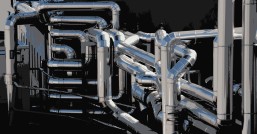In today's advanced manufacturing environment, the role of the internal welder has become increasingly significant, especially in the context of automated welding processes. As technology progresses, it's crucial for welders to stay up-to-date with the latest techniques and equipment. This comprehensive guide will explore the essential contents of an internal welder's training program for automated welding.

1. Introduction to Automated Welding
The training begins with an overview of automated welding technology, highlighting its advantages over traditional manual welding methods. This includes discussions on increased efficiency, improved weld quality, and reduced operator fatigue. The trainees are introduced to various types of automated welding systems, such as robots, gantry systems, and orbital welders.
2. Fundamentals of Welding Technology
The next phase covers the fundamentals of welding, including the principles of heat transfer, metallurgy, and weld fusion. Trainees learn about the various welding processes (e.g., MIG, TIG, Stick) and their applicability to automated welding. Additionally, they gain an understanding of welding consumables like electrodes, wires, and fluxes.
3. Internal Welding Techniques
The focus shifts to internal welding techniques, which involve welding operations performed within confined spaces. The trainees learn about the challenges specific to internal welding, such as limited access and visibility. They are trained on the proper selection and use of internal welding tools and equipment, such as specialized nozzles and torches.
4. Programming and Operation of Automated Welding Systems
This section delves into the programming and operation of automated welding systems. The trainees learn about the different programming languages and software used to control welding robots and other automated equipment. They are guided through the process of creating weld programs, setting welding parameters, and troubleshooting issues that may arise during operation.
5. Safety and Regulatory Compliance

Safety always comes first in welding, and this training program emphasizes the importance of safety procedures and regulations. The trainees are trained on the proper use of personal protective equipment (PPE), handling of hazardous materials, and prevention of accidents. They are also updated on the latest safety standards and regulations in their respective industries.
6. Quality Control and Inspection
Quality assurance is a critical aspect of automated welding. The trainees learn about the various techniques for inspecting welds, such as visual inspection, dye penetrant testing, and radiography. They are also introduced to quality control metrics and how to monitor and improve the quality of welds produced by automated systems.
7. Hands-On Training and Practical Exercises
The theoretical knowledge gained in the classroom is supplemented by hands-on training and practical exercises. The trainees have the opportunity to operate automated welding systems under supervision, applying the techniques and principles they have learned. This practical experience is essential for honing their skills and building confidence in their ability to perform automated welding tasks.
8. Continuous Learning and Advancement
Finally, the training program encourages trainees to stay abreast of the latest developments in automated welding technology. They are advised to seek additional training and certification to further enhance their skills and stay competitive in the industry. The importance of continuous learning and professional development is emphasized throughout the program.
In conclusion, an effective internal welder training program for automated welding should cover the fundamentals of welding technology, internal welding techniques, programming and operation of automated systems, safety and regulatory compliance, quality control, hands-on training, and continuous learning. By following this comprehensive guide, welders can acquire the necessary skills and knowledge to excel in the field of automated welding.










发表评论